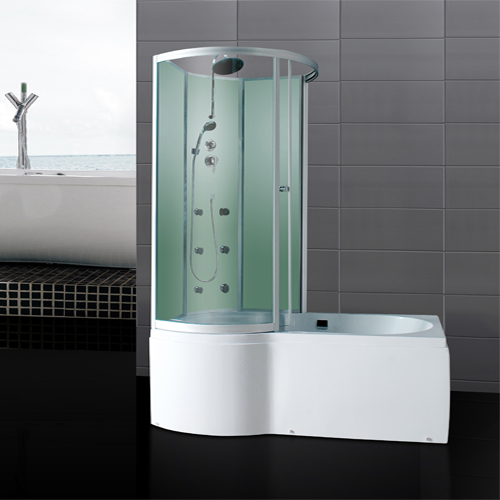
Video baseband transmission is the most traditional TV monitoring transmission method. It does not process any 0~6MHz video baseband signal, and directly transmits analog signals through coaxial cable (unbalanced). The advantages are: short-distance transmission image signal loss is small, and the cost is low.
Disadvantages: short transmission distance, high frequency component attenuation of more than 300 meters, can not guarantee image quality; one cable should be equipped with one cable, and the transmission control signal needs another cable; its structure is star structure, large amount of wiring, maintenance Difficulties and poor scalability.
Optical fiber transmission is commonly used in analog optical transceivers and digital optical transceivers. It is the best solution for solving tens or even hundreds of kilometers of TV surveillance transmission. It converts video and control signals into optical signals for transmission in optical fibers.
The advantages are: long transmission distance, small attenuation, best anti-interference performance, suitable for long-distance transmission. The disadvantage is that the monitoring signal transmission is not economical within a few kilometers; the optical welding and maintenance require professional technicians and equipment to operate and handle, and the maintenance technical requirements are high, and it is difficult to upgrade and expand.
Network transmission is a monitoring transmission method that solves the long distance between the metropolitan areas and the extremely scattered points. The monitoring signal is transmitted by the MPEG audio and video compression format. The advantage is that the network video server is used as the monitoring signal uploading device, and the remote monitoring software installed on the Internet network can monitor and control.
The disadvantage is: limited by the bandwidth and speed of the network, only small images and low-quality images can be transmitted; only a few to a dozen frames per second can be transmitted, the animation effect is very obvious and there is delay, and real-time monitoring is impossible. .
Microwave transmission is one of the solutions to solve the monitoring transmission of several kilometers or even tens of kilometers of difficult wiring places. The method of frequency modulation or amplitude modulation is used to mount the image on a high frequency carrier and convert it into high frequency electromagnetic wave for transmission in the air. The advantages are: eliminating wiring and cable maintenance costs, and dynamically transmitting broadcast-level images in real time.
The disadvantage is that due to the use of microwave transmission, the frequency band above 1 GHz is commonly used in L-band (1.0~2.0GHz), S-band (2.0~3.0GHz), Ku-band (10~12GHz), and the transmission environment is open space is easy. It is subject to external electromagnetic interference; the microwave signal is transmitted in a straight line, and there is no mountain or building blockage in the middle; the Ku band is more affected by the weather, especially in rain and snow.
Twisted pair transmission (balanced transmission) is one of the solutions to solve the problem that the monitoring image is transmitted within 1Km and the electromagnetic environment is complex. The monitoring image signal processing is transmitted in a balanced and symmetric manner. The advantages are: simple wiring, low cost, and strong anti-common mode performance.
The disadvantage is that it can only solve the image transmission within 1Km, and one twisted pair can only transmit one image, which is not suitable for large and medium-sized monitoring; the twisted-pair texture is weak and resistant to aging, and is not suitable for field transmission; The high-frequency component of the twisted wire transmission is attenuated, and the color of the image is greatly lost.
First-line transmission is the best solution to solve the monitoring signal transmission from several kilometers to tens of kilometers. It adopts advanced technologies such as amplitude modulation, audio frequency modulation and FSK data signal modulation, and can monitor dozens of surveillance images, sound, control and alarm signals. Integrated into a "one" coaxial cable for bidirectional transmission.
The utility model has the advantages that: the resource space of the coaxial cable is fully utilized, and dozens of channels of audio, video and control signals are transmitted in two directions in the same cable, and the first-line communication is realized in one line; the construction is simple, the maintenance is convenient, and a large amount of material cost and construction are saved. Cost; frequency division multiplexing technology solves the problem of remote transmission point dispersion, wiring difficulty monitoring transmission problem; RF transmission mode only attenuates carrier signal, image signal attenuation is small, brightness and chrominance transmission are synchronously nested, and image quality is guaranteed to reach 4.5 level The above national standards; 75Ω coaxial unbalanced transmission makes it very resistant to interference, and the image quality can still be guaranteed in complex electromagnetic environments.
From the above six transmission methods, it is easy to see that the video baseband transmission distance is very short, and the optical fiber transmission and the first-line transmission are more suitable for long-distance transmission. The network transmission is susceptible to the network bandwidth, and the microwave transmission is greatly affected by the environment. The line is only suitable for monitoring transmission within 1KM and can only transmit one image.
In contemporary bathroom design, shower cabins have become really important. The Shower Cabin was invented as an alternative to the bathtub, especially for small bathrooms. Producers have evolved the shower cabin concept to make it become a home spa. The monoblock shower cabin are the most common ones because they contain the shower tray, the drain, the tap, the rainshower, the door and several lateral nozzels. As an alternative, the shower cabin can be built, purchasing each single element separately and closing it with a glas door. The first solution, as usual, has the advantage of being customizable and made to fit, while the second one enjoys contemporary industrial design with perfect technological solution at an affordable cost.

Shower Cabin
Shower Steam Cabin,Shower Cabin,Steam Cabins,Shower Cabinet
Pinghu Relax Sanitary Ware CO.,ltd , https://www.relaxsanitary.com